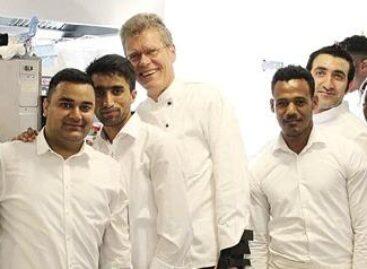Innovative technologies 2.0: from the Mariana Trench to the peak of K2
Food industry isn’t only changing in its product portfolio, but also in the technologies it uses. AI, automation, precision technologies, blockchain and robotics are often mentioned as technologies that are still looking for their place in the food industry. We now take a look at other innovative technologies that are already being used in the food industry.
This article is available for reading in Trade magazin 2025/4.

Guest writer:
Dr. Erzsébet Némedi
biotechnologist and
food engineer
Trend dreams: early days
It is a fact that a paradigm shift would be necessary for a more sustainable future. It is also a fact that without major changes not much can be done. Some developments have already stayed with us and are slowly changing the food industry fundamentally. These technologies are still in their early days. One such technology is blockchain, used in supply chains as a decentralised database that enhances traceability. In Hungary little is being said about food science software or intelligent tracking systems, and robotics solutions are also hard to find. There is even less talk about nanotechnology, which allows products to be fortified with new materials by surface expansions, thus improving quality and shelf life.
Innovative reality – technologies that work
All the technologies presented here were either laboratory-only a few years ago or used for completely different purposes. High pressure processing (HPP): this technology rapidly destroys microbes, inactivates viruses and denatures spoilage enzymes, doing all of these without utilising heat. The machine used for this purpose is a large cabin in which the product is placed in its final packaging, then water is filled around it in a tank and there is pressure in the cabin as high as at the bottom of the Mariana Trench. HPP can extend the shelf life without chemicals. Extrusion: one would think that extrusion is a familiar technology, but it is being rediscovered. If extrusion is understood as a texturisation process, it can serve very well in making plant-based meat substitutes.

It’s not enough to invest in the machine, it will take much more time, energy and effort to ensure that knowledge and expertise to work them are continuously available
Aseptic processing and packaging: aseptic processing is a combination of continuous heat treatment and advanced packaging. It means filling sterilised packages in a sterile environment. PEF or pulsed electric field technology: particles of different charge attracted to the right electrodes create holes in cells. The technology used to be applied in preserving soft drinks, but since it has been found to puncture not only microbe cells but also the cell walls of vegetables, many raw materials can be cut, sliced and baked without loss by using this technology. Lyophilisation: with this we have reached the peak of K2, where the environment is as freezing as in a lyophilizer. Lyophilisation or freeze-drying is when the water content of products is removed by sublimation in the frozen state. This means that 98% of the nutrients are retained, with only 20% of the total weight.

These technologies wear children’s shoes, learn to walk, often fall down, make many mistakes, but grow very fast
It costs a lot of money, but it matters where you spend it
Improving production this way requires resources and time to make the necessary changes. It isn’t enough to invest in the machinery, much more time, energy and effort will be required to continuously provide the knowledge, expertise, research and development to invest in the new system. Let’s not forget that change will fundamentally transform our current manufacturing technology and in the long term it can give us a competitive edge. //
Related news
Responsible Gastro Hero Foundation: a sourdough and kombucha sharing campaign
🎧 Hallgasd a cikket: Lejátszás Szünet Folytatás Leállítás Nyelv: Auto…
Read more >Safe vegetable fermentation
🎧 Hallgasd a cikket: Lejátszás Szünet Folytatás Leállítás Nyelv: Auto…
Read more >Refugees in HoReCa
🎧 Hallgasd a cikket: Lejátszás Szünet Folytatás Leállítás Nyelv: Auto…
Read more >Related news
Responsible Gastro Hero Foundation: a sourdough and kombucha sharing campaign
🎧 Hallgasd a cikket: Lejátszás Szünet Folytatás Leállítás Nyelv: Auto…
Read more >Style, language and tools
🎧 Hallgasd a cikket: Lejátszás Szünet Folytatás Leállítás Nyelv: Auto…
Read more >Retail sales in a trap of uncertainty
🎧 Hallgasd a cikket: Lejátszás Szünet Folytatás Leállítás Nyelv: Auto…
Read more >





